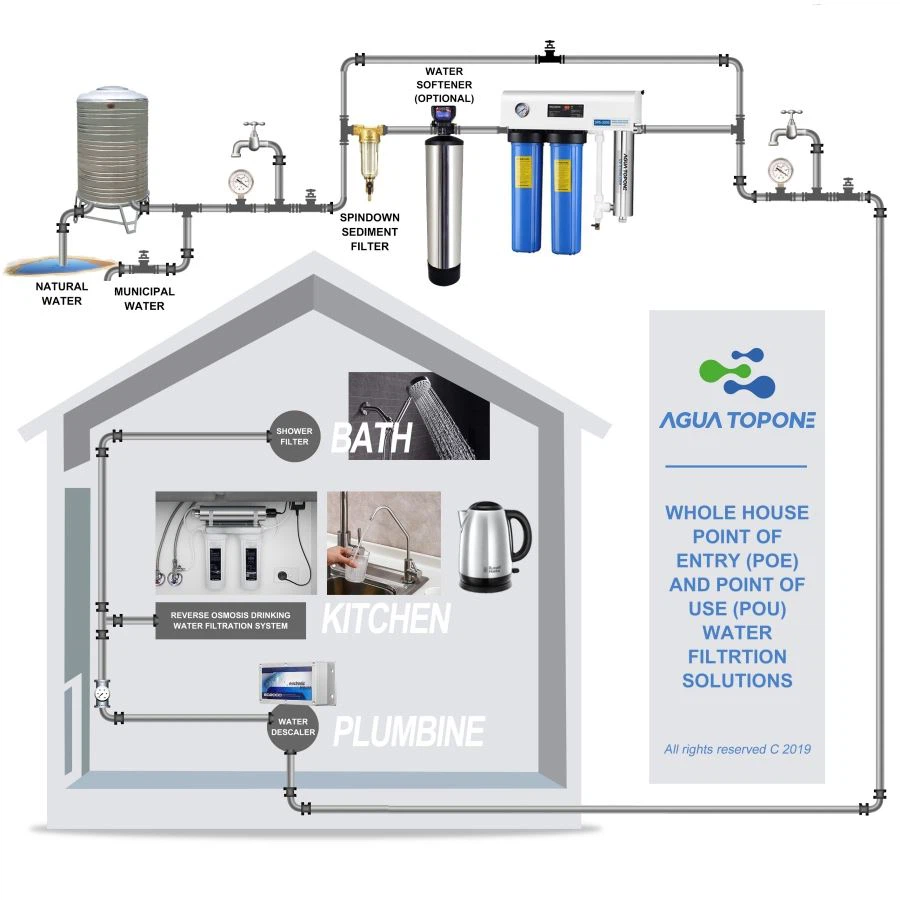Ultraviolet (UV) light water filtration and purification system has been used for well over one hundred years to make drinking water safe. Today it is used by some of the largest cities in the world to purify their municipal drinking water supplies. These cities include New York, Rotterdam, Seattle, and many others in Europe, Asia, and North America.
As with all water purification devices, the decision to buy any product should be based on how that product will impact water quality. That is, decide what you need to fix in your water, and then start looking for a product that will solve your problem. Not all water filtration or purification devices are created equal. Some products are designed to remove sediment, while some products will remove chemicals from the water. Other devices are designed to remove biological contamination.

In the case of a UV system, it is the latter. Anybody who is concerned about possible or proven microbiological contamination in their drinking water should consider a UV system. Do not look to UV to remove any chemicals from water nor to improve the taste and odor of the water. It simply isn’t designed for either.
It is typically rural-living individuals who are interested in an ultraviolet light water filter and it is usually a bad water test that begins their journey through the sometimes confusing world of water purification. A bad water test is a test that shows the presence of E. coli or coliform bacteria. Both E. coli and coliform bacteria should not be present in a drinking water supply. Any laboratory that tests water will be able to test for the presence of these two bacteria. Once it’s been established that either of these two bacteria are present in a water supply, it’s left to the property owner to decide how to proceed. Most rural water professionals will offer two choices when it comes to dealing with bacteria in your water: UV or Chlorine.
Chlorine is an aggressive oxidizing agent. When it’s added to water it very quickly attacks the tissues of bacteria or other microorganisms that might be present in the water. The trouble is chlorine also mixes with some of the naturally occurring chemicals in the water to produce harmful disinfection byproducts that end up in the drinking water.
UV, on the other hand, adds nothing to the water. It simply kills bacteria and other microorganisms as they pass by the UV lamp. Ultraviolet systems are comprised of a steel chamber into which a UV lamp is inserted. UV systems also include a power supply, sometimes called a ballast, for powering the lamp. Residential ultraviolet light water filters are usually plumbed on the main water line for a home or cottage. Some UV systems are equipped with a UV sensor and still others are NSF Certified.
It is important to note that all UV systems must be used with a sediment filter. Sediment that is allowed to pass through the UV system can harbor bacteria and create shadows inside the chamber that can decrease the effectiveness of the system.
Specializing in UV water purification and disinfection solutions, PolexTech designs, and engineers all product solutions for the whole home, commercial, industrial, and municipal, We provide a “one-stop” solution for all your water purification and disinfection needs.
If you want to learn more about PolexTech UV Water Sterilizer System, welcome to check on www.polextech.com, or please contact us requesting for catalogue. If you have some ideas to share and discuss together, please feel free to comment as well, PolexTech team members will get back to you within 12 working hours. Thank you, have a nice day.



